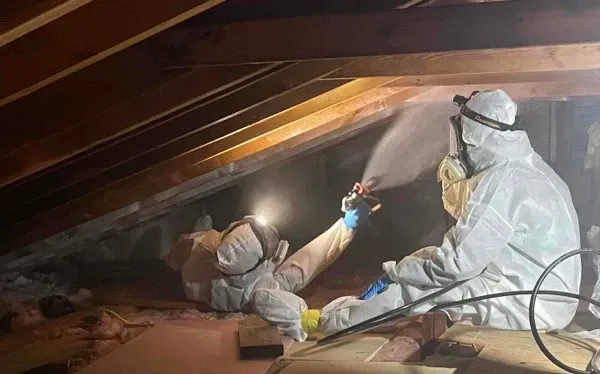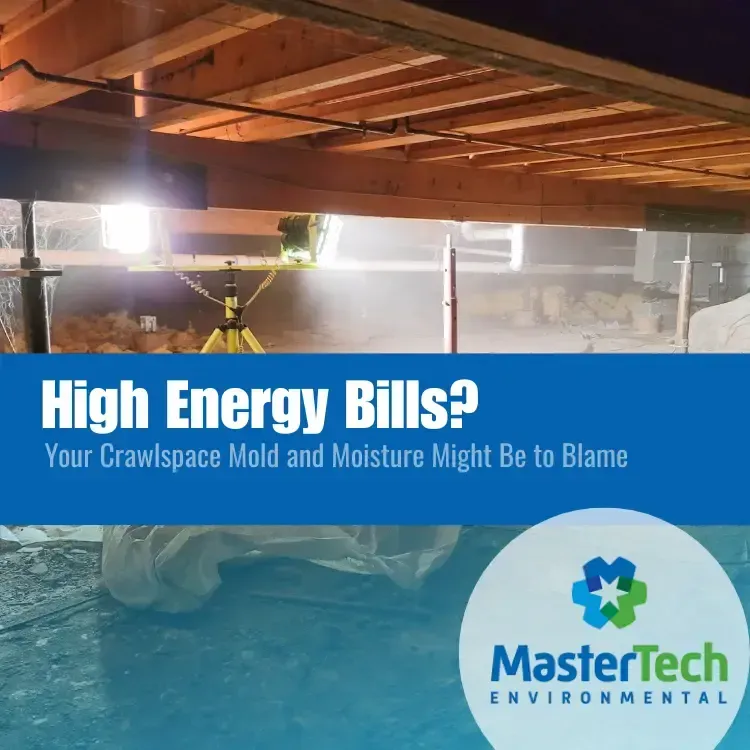Attic Mold in Myrtle Beach: Why It's Happening and How to Handle It

If you live in Myrtle Beach, your attic silently battles moisture every day. Many homeowners here rarely venture into their attics, unknowingly allowing humidity and mold to accumulate and build up. It often takes symptoms like persistent musty odors, worsening allergies, or unusual discoloration on ceilings to signal that something is seriously wrong upstairs.
Ignoring attic mold doesn't simply risk structural damage—it threatens the health of everyone living in your home. In order to address this issue, you should know why mold is common in this area, how to recognize early warning signs, and precisely what steps to take for effective attic mold remediation in Myrtle Beach.
Why Is Mold Thriving in Myrtle Beach Attics?
Homeowners frequently wonder why their attic, an area they rarely use or even visit, becomes a hotspot for mold. Myrtle Beach's humid subtropical climate is the central reason. Coastal humidity consistently stays above 70%, creating a near-constant supply of moisture. Warm indoor air rises, and when it hits cooler attic surfaces—especially overnight or during rainy seasons—it condenses. Over time, this repetitive cycle saturates wooden beams, roof sheathing, and insulation, creating an ideal environment for mold growth in the attic.
Crucially, inadequate ventilation or poorly sealed attics worsen this scenario. Even well-ventilated attics in humid regions, according to research from the EPA, can experience moisture buildup. Attic mold often thrives unnoticed, growing quietly in spaces that homeowners assume are dry simply because they never actively inspect them.
How Do I Know If My Attic Has Mold?
Knowing mold's preference for hidden spaces, homeowners commonly face confusion about whether mold truly lurks above them. Mold isn't always easy to spot visually until significant growth has occurred, but certain clear, measurable indicators provide reliable warnings. Early identification is critical because the quicker you act, the less damage mold can cause. Look for these definitive signs to decide if professional attic mold inspection is needed.
· Persistent Musty Odors: A musty, earthy smell that intensifies when your HVAC system is frequently running often indicates mold hiding in your attic.
· Visible Discoloration or Dark Spots: Black, brown, or dark green stains on beams, plywood, or insulation indicate the presence of mold.
· Humidity Levels Above 60%: Regularly using a hygrometer can reveal potentially hazardous moisture conditions.
· High Wood Moisture Content (above 20%): Moisture meters provide precise readings to indicate whether the wood is sufficiently dry to prevent mold growth.
Any combination of these signals strongly suggests immediate action, including a detailed attic mold inspection.
Is Attic Mold Truly Dangerous?
When homeowners detect mold in their attics, a common immediate concern is whether it poses genuine health risks. Mold isn't merely an annoyance—it directly threatens indoor air quality. According to the CDC, breathing mold spores can cause respiratory symptoms, headaches, chronic fatigue, and exacerbate asthma and allergies. Because air naturally circulates from attics into living areas, mold spores and toxins quietly drift downward, impacting your family's health even if mold remains unseen.
Vulnerable individuals, such as children, elderly family members, or those with existing respiratory conditions, face heightened risks from prolonged exposure. Health concerns alone underscore the urgency of promptly addressing attic mold.
What Should I Expect From Professional Attic Mold Inspection?
With health and home safety at stake, homeowners often feel uncertainty about what exactly happens during professional inspections. An accurate attic mold inspection isn't just a quick visual glance—it's an in-depth evaluation by certified inspectors who thoroughly assess every detail of your attic's condition. Here's precisely what to expect during an inspection:
· Visual Assessment: Inspectors closely examine beams, insulation, roof decking, and ventilation for signs of mold.
· Moisture Mapping: Advanced moisture detection equipment pinpoints exactly where humidity and moisture accumulate.
· Thermal Imaging: Infrared scans detect hidden moisture or cool spots on attic surfaces, often invisible to the naked eye.
· Air Quality and Surface Testing: Air and surface samples, analyzed by accredited laboratories, confirm the type, severity, and risk levels of mold.
Detailed reports from this thorough inspection clearly outline your attic's condition and provide targeted guidance for mold removal steps.
How is Attic Mold Removal Done Correctly?
Homeowners often express anxiety about mold removal, unsure whether simply scrubbing surfaces themselves is sufficient. DIY efforts typically fail to fully address mold or stop it from returning. True attic mold remediation involves far more meticulous work—specialized cleaning, containment, and long-term moisture prevention strategies. Professional attic mold removal includes:
· Containment and Safety: Professionals isolate the attic to prevent spreading mold spores during remediation.
· Careful Mold Removal: Removing mold-infested insulation and thoroughly cleaning structural materials using industry-approved mold removal products.
· Treatment of Affected Surfaces: Applying mold-inhibiting agents or encapsulation products to prevent future growth.
· Post-Cleaning Verification: Rechecking moisture levels and retesting air quality afterward to ensure complete remediation.
This precise, methodical approach completely removes existing mold and significantly reduces the risk of recurrence.
How Can I Prevent Attic Mold from Returning?
Once mold is removed, homeowners often fear recurrence. Proper attic mold remediation in Myrtle Beach isn't complete without addressing the underlying sources of humidity. Prevention hinges upon maintaining low moisture levels, proper insulation, adequate sealing, and monitoring. Here's precisely what you can do to maintain a mold-free attic:
· Seal Air Leaks: Prevent warm, humid air from entering your attic by sealing attic doors, hatchways, recessed lighting, and duct penetrations.
· Upgrade Ventilation and Insulation: Ensure balanced ventilation or convert to a sealed attic system with mechanical dehumidification.
· Consistent Monitoring: Regularly check attic humidity to keep levels consistently below 60%. Schedule seasonal inspections during peak humidity months (spring and summer).
These proactive steps reliably safeguard your attic and entire home from future mold threats.
Don't Wait—Take Action Now for a Mold-Free Attic
Attic mold isn't a minor inconvenience—left unchecked, it silently damages your home's structure and poses a threat to your family's health. The humid coastal conditions of Myrtle Beach demand proactive attic mold inspections and professional remediation. MasterTech Environmental's certified inspectors provide detailed, accurate mold inspections, comprehensive removal solutions, and clear guidance to protect your attic permanently.



